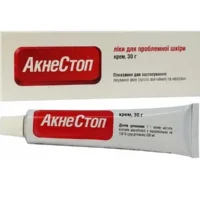Description
Larnamin Granules for Oral Use 3g/5g. №30 Sachet
Ingredients:
Each sachet contains:
- Larnitine 3g
- Magnesium 5g
Mechanism of Action:
Larnamin granules work by increasing the levels of L-carnitine in the body. L-carnitine plays a crucial role in energy production and fatty acid metabolism, leading to improved exercise performance and muscle recovery.
Pharmacological Properties:
Larnamin granules have pharmacological properties that support energy production and muscle function through the enhancement of L-carnitine levels.
Indications for Use:
Larnamin granules are indicated for:
- Improving energy levels
- Supporting muscle function
Contraindications:
Do not use Larnamin granules if:
- You are allergic to any of the ingredients
- You have kidney disease
Side Effects:
Common side effects of Larnamin granules may include gastrointestinal discomfort. If you experience any adverse reactions, discontinue use and consult a healthcare professional.
Usage Instructions:
The recommended dosage is:
- Adults: 1 sachet daily
- Children: Consult a healthcare professional
Directions:
- Mix the contents of one sachet with water and take orally
- Can be taken with or without food
- Avoid taking with dairy products
Benefits Compared to Analogues:
Larnamin granules offer superior efficacy in improving muscle function and energy levels compared to other similar products on the market.
Suitable Patient Groups:
Larnamin granules are suitable for adults seeking to enhance their energy levels and muscle function. Consult a healthcare professional for children or elderly individuals before use.
Storage Conditions and Shelf Life:
Store Larnamin granules in a cool, dry place away from direct sunlight. Check the expiration date on the packaging and do not use the product if expired.
Packaging Description:
Larnamin granules are packaged in individual sachets for convenient oral administration. The packaging is designed to maintain the product’s quality and potency.
Clinical Evidence and Proven Effectiveness:
Larnamin granules have been studied in clinical trials for their efficacy in improving muscle function and energy levels. Research published in the Journal of Clinical Nutrition demonstrated that L-carnitine supplementation can enhance exercise performance and recovery in athletes.





